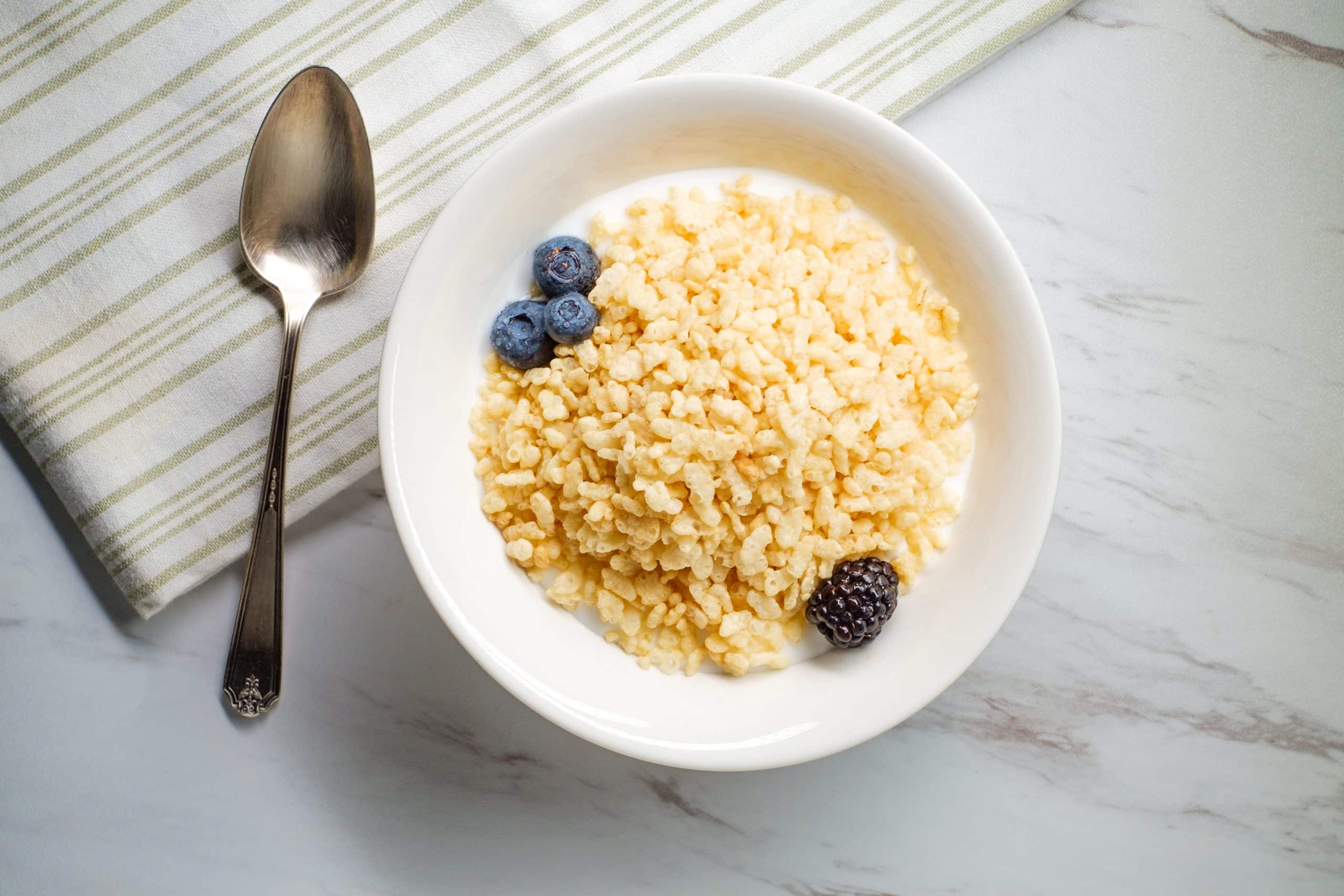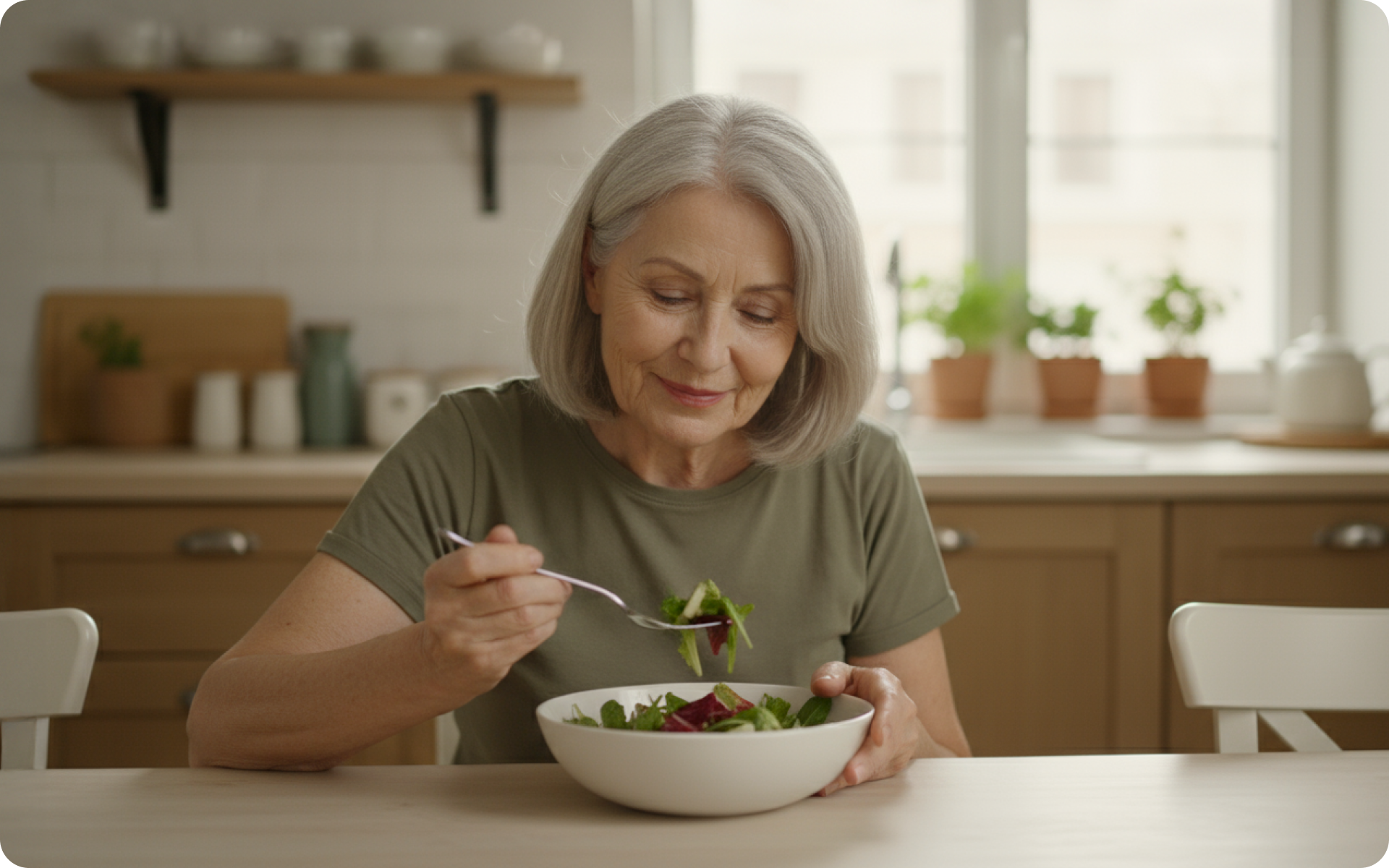Vitamin D plays an important role in muscle and bone strength. It also plays an important role in supporting calcium levels in the body (6). This essential vitamin is contained in few foods and can also be naturally derived from sunlight. In addition, it can be obtained through supplements if necessary. The sun’s ultraviolet rays promote vitamin D production in the skin, which can help with adequate levels. However, it’s important to maintain an appropriate level of sun exposure as excessive amounts can lead to sunburn, eye and skin damage, and an increased risk of skin cancer (2).
Furthermore, the body can only absorb so much vitamin D in the body at a time. This means that more sunlight exposure in the hope of increasing levels isn’t necessarily better or safer (2). Certain foods including fatty fish such as salmon, eggs, fortified milk, and other fortified food products can be sources of Vitamin D. However, food sources only provide a small amount, which makes it unlikely that you will obtain enough from food sources alone.
Vitamin D foods for vegetarians can be just as accessible as vitamin D foods for non-vegetarians. Continue reading to explore practical ways to ensure adequate intake.
Which Vegetarian Food Is Rich in Vitamin D?
Finding vitamin D foods for vegetarians may appear harder than traditional diets, but vegetarian diets still include animal products. Vitamin D is in eggs, fortified milks and cereals, and other fortified foods that vegetarians can eat. Interestingly, a systematic review comparing the nutritional status of vegetarian, vegan, and traditional diets found traditional diet patterns to be at risk of an inadequate intake of vitamin D (7).
You can read more about Vitamin D Foods For Vegetarians here.
What Vegetables Are High in Vitamin D?
Vitamin D is only present in a small number of foods in quite insignificant amounts. It can be difficult to obtain enough of this vitamin from food alone, which is why it’s important to consider other methods as well. Sun exposure helps with vitamin D, but it’s important to make sure daily sun exposure is at a safe amount. As you’ll learn below, mushrooms can be an excellent source of vitamin D if they’re exposed to UV rays through sunlight or ultraviolet light. The table below shows different mushroom varieties and their vitamin D content, which can be useful for determining the best choice.
Betterme will keep you laser-focused on your weight loss journey! Nutrient-packed meal plans, fat-blasting workouts, galvanizing challenges and much more. Try using the app and see for yourself!
What Foods Are Highest in Vitamin D?
As per the USDA National Nutrient Database (8), the foods in the table below are listed from highest to lowest vitamin D content. This table highlights that mushrooms exposed to ultraviolet light can be an excellent source of this vitamin. Different fish varieties seem to also provide higher levels of vitamin D than other foods, but this is not relevant for vegetarians.
Cows milk and plant-based milk alternatives are typically fortified with vitamin D to contribute to daily intake levels, as are other food products such as tofu, which can also be an excellent source of protein and calcium. The table highlights some key food sources of vitamin D for vegetarians and vegans.
| Description of food | Weight (grams) | Measurement | Vitamin D content (IU) per measure |
|---|---|---|---|
| Mushrooms, brown, Italian, or crimini, exposed to ultraviolet light, raw | 87 | 1 cup whole | 1110 |
| Mushrooms, portabella, exposed to ultraviolet light, raw | 86 | 1.0 cup diced | 976 |
| Fish, halibut, Greenland, raw | 85 | 3.0 oz | 932 |
| Fish, carp, raw | 85 | 3.0 oz | 840 |
| Fish, mackerel, salted | 80 | 1.0 piece (5-1/2" x 1-1/2" x 1/2") | 805 |
| Mushroom, white, exposed to ultraviolet light, raw | 70 | 1.0 cup pieces or slices | 732 |
| Vitasoy USA, Nasoya Lite Firm Tofu | 91 | 0.2 package | 124 |
| Milk, nonfat, fluid, with added nonfat milk solids, vitamin A, and vitamin D (fat-free or skim) | 245 | 1.0 cup | 120 |
Read more: Do Vegetarians Eat Fish
How to Increase Vitamin D Levels Quickly with Vegetarian Food
Increasing vitamin D levels quickly with vegetarian food or following a vegetarian dietary pattern can be a combination of fortified food products and supplementation. However, it’s important to seek appropriate guidance from a healthcare professional before you choose to supplement. Vitamin D is not typically present in fruits and vegetables, but mushrooms are the exception. A healthcare professional can advise what the best vegan vitamin supplement is for your individual requirements.
BetterMe app will kick you out of the mental funk, shake off your extra weight, rid you off your energy-zapping habits, and help you sculpt the body of your dreams. Intrigued? Hurry up and change your life for the better!
FAQs
Do carrots contain vitamin D?
Carrots do not contain vitamin D. While they are a rich source of vitamins and dietary fiber, carrots will not contribute to vitamin D levels. Generally, vitamin D is not found in fruits and vegetables, with the exception of some mushrooms. Exposing commonly consumed mushroom varieties to UV radiation produces vitamin D, which remains with storage and cooking. This may be a practical option for vegetarians, vegans, and other dietary patterns as mushrooms are a versatile and popular food (1).
What are 3 foods that contain vitamin D?
Vitamin D is naturally found in only a few foods, primarily in fatty fish, egg yolks, and certain fortified foods. Incorporating these foods into your diet can ensure an adequate intake of this essential vitamin.
- Mushrooms: Mushrooms that are exposed to ultraviolet light have been shown to contain decent amounts of vitamin D. This is a promising option as vitamin D is typically not present in many vegetarian or vegan foods, apart from fortified foods.
- Egg Yolks: Egg yolks are another natural source of vitamin D. While the amount of vitamin D in eggs can vary, it still contributes to total intake. Eggs can be simple to include in your diet as they’re incredibly versatile. Consider scrambling, boiling, or making an omelet or frittata. The bonus is that they are a fantastic option to include plenty of vegetables too.
- Fortified Foods: In addition to naturally occurring sources, some foods are fortified with vitamin D to enhance their nutritional value. Common fortified foods include milk (both dairy and plant-based alternatives), orange juice, breakfast cereals, and certain types of yogurt. These fortified products provide a convenient way to increase your vitamin D intake.
What are 5 signs of vitamin D deficiency that shouldn’t be ignored?
A deficiency in Vitamin D can pose serious health concerns if it goes unchecked. It’s important to pay attention to intake, ensuring optimal stores are maintained, as a deficiency may not appear immediately obvious (2).
As vitamin D plays an important role in bone and muscle health, deficiencies may lead to pain and weakness. In severe cases, conditions such as osteoporosis, rickets (in children), and osteomalacia (in adults) can develop. An increased risk of fractures and falls is also a significant concern (7).
Vitamin D deficiency can occur through various signs and symptoms, which can lead to significant health complications if ignored. Recognizing these signs is essential for early intervention and the prevention of associated risks.
Muscle Weakness and Pain:
Vitamin D is essential for muscle function and strength. A deficiency may result in muscle weakness, fatigue, and generalized body pain. Individuals may experience difficulty performing daily activities and notice increased susceptibility to muscle cramps and spasms.
Bone Health Issues:
Vitamin D plays a pivotal role in maintaining bone health by regulating calcium absorption and bone mineralization. A deficiency can lead to weakened bones and an increased risk of bone-related disorders such as osteoporosis, which is characterized by reduced bone density and increased susceptibility to fractures. In children, vitamin D deficiency can manifest as rickets, a condition that is marked by soft and weakened bones, skeletal deformities, and growth retardation.
Osteomalacia: In adults, severe vitamin D deficiency can result in osteomalacia, a condition that leads to bone softening. This can further lead to bone pain and an increased risk of fractures.
Increased Risk of Falls:
Vitamin D deficiency can be associated with an increased risk of falls, particularly in older adults. This is due to decreased muscle strength and balance. This increased risk may further contribute to reduced movement due to fear of falling, compromising other health aspects, such as social well-being.
Mood Changes and Depression:
Emerging research has suggested a link between vitamin D deficiency and mood disorders such as depression and seasonal affective disorder. Adequate vitamin D levels are believed to play a role in regulating neurotransmitters and mood-regulating hormones in the brain. Therefore, deficiency could contribute to sadness, low mood, and diminished overall well-being.
It’s important to note that vitamin D deficiency symptoms can vary among individuals, and signs may not always be obvious. Regularly monitoring vitamin D levels and being mindful of an adequate intake through food and sunlight is essential for optimal health. For an interesting read, learn about vitamin D for hair growth.
How can I increase vitamin D levels?
Increasing Vitamin D levels in the body can be done through a combination of mechanisms, particularly as there are limited food sources. Taking a multifaceted approach that considers diet, sun exposure and, if necessary, supplementation will help effectively increase your vitamin D levels.
Exposure to Sunlight:
The body creates vitamin D when exposed to sunlight. Therefore, spending time outdoors can help naturally increase vitamin D levels in the body. Aiming for approximately 10-30 minutes of sun exposure to the arms and legs a few times a week without sunscreen can help. It’s important to ensure safe exposure to sunlight though and you can more here: is Vitamin D Good For Your Skin?
Vitamin D-Fortified Foods:
Many foods are fortified with vitamin D, including plant-based milk alternatives (soy, almond, or oat milk), orange juice, and breakfast cereals. Make sure you check the label to ensure they are fortified with vitamin D.
Mushrooms:
Include more mushrooms in your diet. As we have learned, mushrooms can be an excellent source of vitamin D. Refer to the table above to review different types and their content.
Supplements:
If your diet or sunlight exposure is inadequate, it could be wise to consult your doctor and check your levels. A healthcare professional will ensure appropriate measures are taken and provide reputable guidance. Furthermore, they can help ensure or prevent a vitamin D deficiency regardless of whether you’re vegan, vegetarian, or following any other eating pattern.
Consume Healthy Fats:
Incorporating healthy fats in your diet, such as nuts, seeds, avocado, and olive oil, can support the absorption of vitamin D in the body. This is because vitamin D is a fat-soluble vitamin, which means that fat helps the body absorb it more effectively. Healthy fat sources that provide omega-3 are also supportive of other aspects such as hair growth. You can read more about vitamin D for hair growth here.
Consult a Healthcare Professional:
If you’re concerned about your vitamin D levels or are considering supplementation, it’s advisable to consult a healthcare professional or registered dietitian who can provide personalized recommendations based on your specific dietary needs and health status.
By incorporating these strategies into your lifestyle, you can help ensure adequate vitamin D levels as a vegetarian.
The Bottom Line
Ensuring optimal vitamin D levels for vegetarians and non-vegetarians typically requires a multifaceted approach. This includes sun exposure, fortified foods, and if necessary, supplementation.
While sunlight is a natural source of vitamin D, it’s important to be cautious of the risks of excessive exposure, such as skin damage. Opting for fortified foods can be a safe and effective method of increasing vitamin D intake through diet. Remember to choose items that are fortified with vitamin D and incorporate vitamin D-rich foods into your diet regularly. Eating healthy fats is also important to help with the absorption of vitamin D in the body.
Finally, if necessary, supplementation can be effective. However, seeking advice from a healthcare professional is recommended to ensure appropriate intakes are met for optimal health and well-being.
DISCLAIMER:
This article is intended for general informational purposes only and does not serve to address individual circumstances. It is not a substitute for professional advice or help and should not be relied on for making any kind of decision-making. Any action taken as a direct or indirect result of the information in this article is entirely at your own risk and is your sole responsibility.
BetterMe, its content staff, and its medical advisors accept no responsibility for inaccuracies, errors, misstatements, inconsistencies, or omissions and specifically disclaim any liability, loss or risk, personal, professional or otherwise, which may be incurred as a consequence, directly or indirectly, of the use and/or application of any content.
You should always seek the advice of your physician or other qualified health provider with any questions you may have regarding a medical condition or your specific situation. Never disregard professional medical advice or delay seeking it because of BetterMe content. If you suspect or think you may have a medical emergency, call your doctor.
SOURCES:
- A Review of Mushrooms as a Potential Source of Dietary Vitamin D (2018, nih.gov)
- Vitamin D (betterhealth.vic.gov, 2022)
- Vitamin D (2023, nih.gov)
- Vitamin D Fact Sheet For Consumers (2022, nig.gov)
- Vitamin D NRV (nd, eatforhealth.gov)
- Vitamin D & Bone Health (2024, healthybonesaustralia.org)
- Nutrient Intake and Status in Adults Consuming Plant-Based Diets Compared to Meat-Eaters: A Systematic Review (2021, nih.gov)
- USDA National Nutrient Database for Standard ReferenceRelease 28 (2015,nig.bov)








